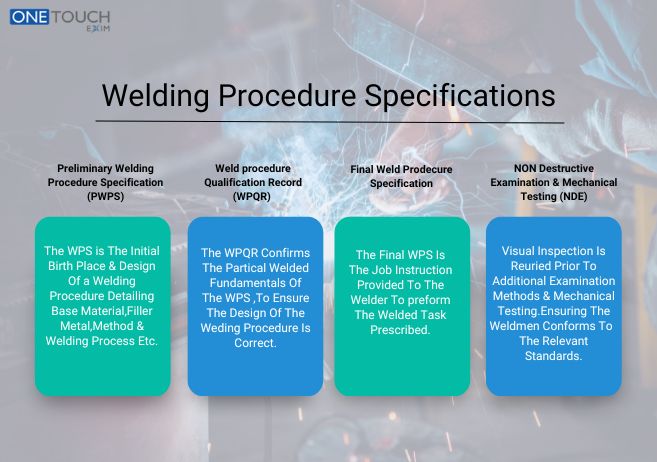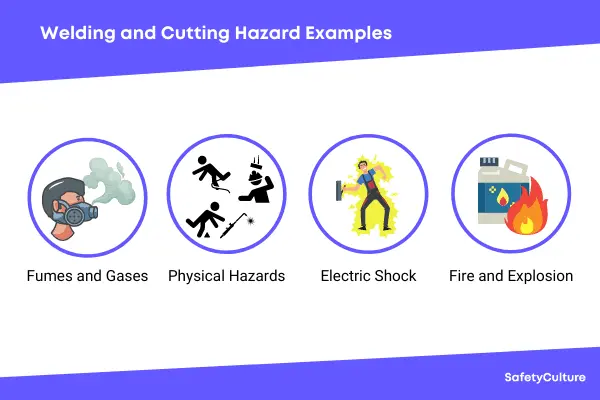The Ultimate Overview to Welding Inspection Racine for Industrial Requirements
The Ultimate Overview to Welding Inspection Racine for Industrial Requirements
Blog Article
Cutting-edge Techniques to Fillet Weld Examination and Screening: Enhancing Weld Quality and Compliance Specifications
In the world of welding, the high quality and integrity of fillet welds play a vital role in making sure the structural sturdiness and dependability of various commercial components. With the consistent drive for boosted efficiency and compliance with stringent standards, the expedition of ingenious approaches to fillet weld assessment and testing has come to be critical.
Advanced Non-Destructive Testing Techniques
Utilizing advanced innovations, progressed non-destructive screening approaches play a vital function in making certain the honesty and high quality of fillet welds. These approaches, such as phased range ultrasonic testing (PAUT) and magnetic fragment testing (MPT), deal comprehensive understandings right into the weld's interior structure without triggering any damage to the product. PAUT, as an example, utilizes multiple ultrasonic elements to evaluate the weld from numerous angles, giving an extensive visualization of prospective flaws like absence of combination or cracks.
By utilizing these sophisticated non-destructive testing techniques, weld assessors can properly examine the quality of fillet welds, ensuring conformity with sector requirements and policies. The ability to discover defects early on not only boosts weld high quality yet additionally protects against pricey rework or failings in structural integrity, underlining the significance of these cutting-edge testing approaches in welding examinations.
Robotics and Automation in Inspection
The assimilation of robotics and automation has revolutionized the examination process for fillet welds, boosting effectiveness and accuracy in high quality assessment. Robotics provide precise control and repeatability in evaluating welds, guaranteeing reputable and regular results. Automated systems can be set to comply with details evaluation courses, guaranteeing thorough insurance coverage of welds and reducing the threat of human error.
Robotic examination systems geared up with sophisticated sensors can detect and determine weld attributes with high precision, offering thorough data for analysis. These systems can recognize defects such as fractures, lack of blend, and porosity, allowing prompt corrective activities to be taken. Additionally, robotics and automation enable for real-time information collection and analysis, giving immediate feedback to operators and facilitating quick decision-making processes.
In addition, making use of robotics and automation in fillet weld evaluation boosts overall efficiency by minimizing examination times and increasing evaluation throughput. By improving the assessment procedure, makers can make certain weld quality and conformity standards are satisfied effectively, eventually resulting in cost financial savings and improved item high quality.
Using Expert System for Evaluation
Artificial knowledge plays a critical duty in improving the efficiency and precision of analysis in fillet weld examination processes. AI formulas can quickly process huge quantities of data from weld assessments, finding problems or incongruities that may be testing to identify with the nude eye - Welding Inspection Racine.
Moreover, AI systems can pick up from previous inspection data, consistently improving their capacity to identify prospective issues and deviations in fillet welds. This adaptive discovering capacity enhances the overall quality assurance procedure, reducing the chance of human error and making sure that site welds fulfill the required requirements. By incorporating fabricated knowledge into fillet weld analysis, markets can accomplish higher levels of effectiveness, consistency, and compliance in their assessment techniques.
Portable Devices for On-Site Examination
 Enhancing field examination performance, the adoption of portable tools changes on-site analysis procedures for fillet welds. These tools offer flexibility and benefit, enabling assessors to conduct extensive assessments in numerous areas, consisting of tough or remote settings. Mobile devices such as ultrasonic screening gadgets, magnetic bit assessment equipment, and digital radiography systems provide real-time data and high-resolution imaging capabilities, enabling fast decision-making and prompt responses on weld top quality.
Enhancing field examination performance, the adoption of portable tools changes on-site analysis procedures for fillet welds. These tools offer flexibility and benefit, enabling assessors to conduct extensive assessments in numerous areas, consisting of tough or remote settings. Mobile devices such as ultrasonic screening gadgets, magnetic bit assessment equipment, and digital radiography systems provide real-time data and high-resolution imaging capabilities, enabling fast decision-making and prompt responses on weld top quality.One considerable advantage of portable tools is their ability to streamline inspection treatments, minimizing downtime and improving general productivity. Assessors can conveniently deliver these tools to different important link task sites, removing the demand for moving hefty machinery or parts to off-site centers. Additionally, the portability of these devices promotes cost-effectiveness by minimizing transport expenses and accelerating evaluation timelines.
Furthermore, making use of mobile tools for on-site examination promotes proactive quality assurance steps, as inspectors can immediately recognize and resolve any potential welding issues or inconsistencies. By incorporating these cutting-edge innovations into on-site assessment practices, welding specialists can ensure conformity with industry criteria and enhance weld top quality, ultimately causing improved structural honesty and safety in different welding applications.
Integration of Data Monitoring Systems
Having actually optimized on-site examination procedures with the application of portable tools, the following stage involves the seamless assimilation of data administration systems to additionally boost efficiency and information evaluation capacities in fillet weld evaluation and testing. Welding Inspection Racine. By incorporating information monitoring systems right into the assessment process, companies can enhance information collection, storage, and analysis. This integration enables for real-time surveillance of weld top quality, immediate recognition of problems, and punctual decision-making to fix any issues that may develop click for source throughout the examination procedure
The integration of information management systems makes it possible for seamless communication in between various stakeholders involved in the inspection process, promoting cooperation and boosting overall quality control procedures. Eventually, the assimilation of data monitoring systems serves to raise the standards of fillet weld evaluation and screening, guaranteeing conformity with industry guidelines and enhancing weld top quality.
Conclusion
In verdict, cutting-edge approaches to fillet weld assessment and screening have actually considerably boosted weld quality and compliance requirements. Advanced non-destructive testing approaches, robotics, automation, synthetic knowledge, mobile tools, and information management systems have actually changed the way weld assessments are carried out. By making use of these modern technologies, markets can make sure that welds satisfy the called for quality standards and guidelines, inevitably boosting general performance and safety in welding procedures.

By employing these advanced non-destructive screening techniques, weld examiners can accurately examine the quality of fillet welds, making sure compliance with market requirements and regulations. Portable tools such as ultrasonic testing tools, magnetic fragment assessment equipment, and digital radiography systems offer real-time data and high-resolution imaging capacities, allowing fast decision-making and instant feedback on weld high quality.
Having optimized on-site assessment processes through the usage of portable devices, the following phase involves the smooth combination of data monitoring systems to further enhance performance and data analysis capacities in fillet weld assessment and testing (Welding Inspection Racine). Inevitably, the combination of data monitoring systems serves to boost the requirements of fillet weld inspection and screening, guaranteeing conformity with market regulations and boosting weld high quality
 In final thought, innovative strategies to fillet weld examination and testing have dramatically enhanced weld quality and conformity standards.
In final thought, innovative strategies to fillet weld examination and testing have dramatically enhanced weld quality and conformity standards.Report this page